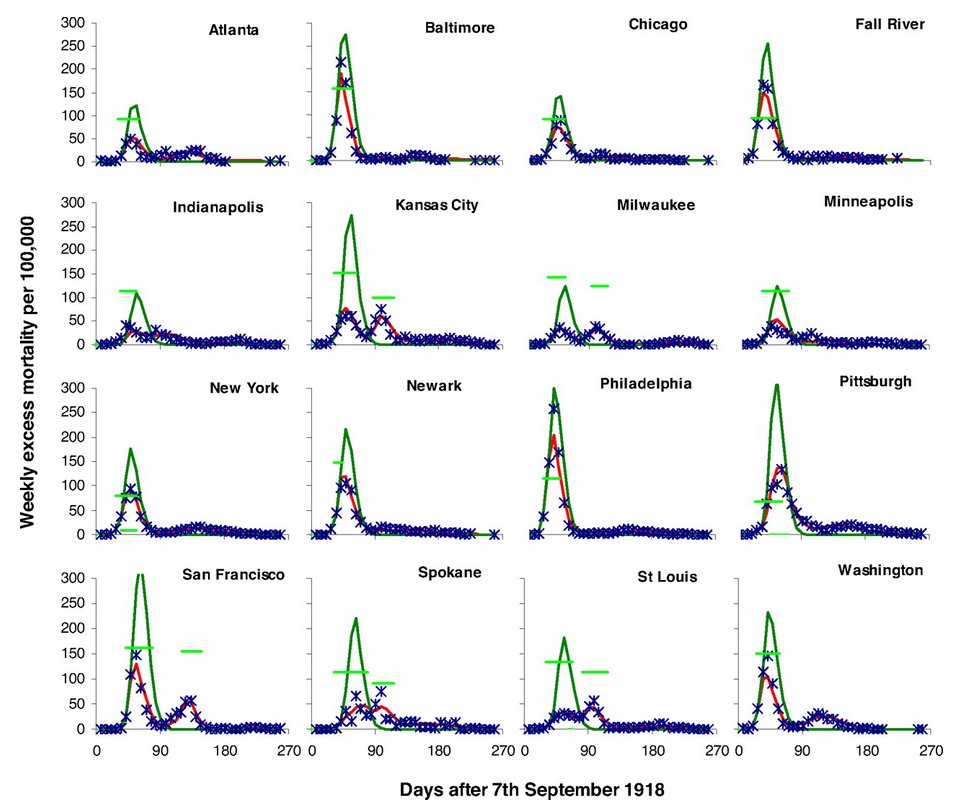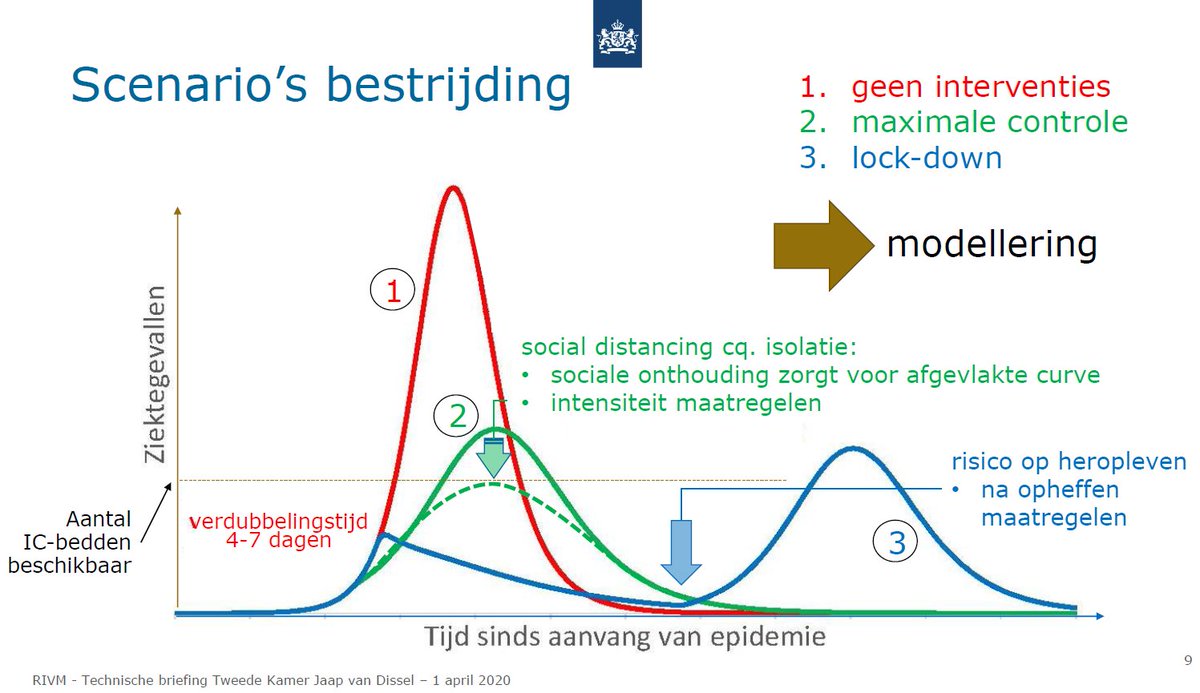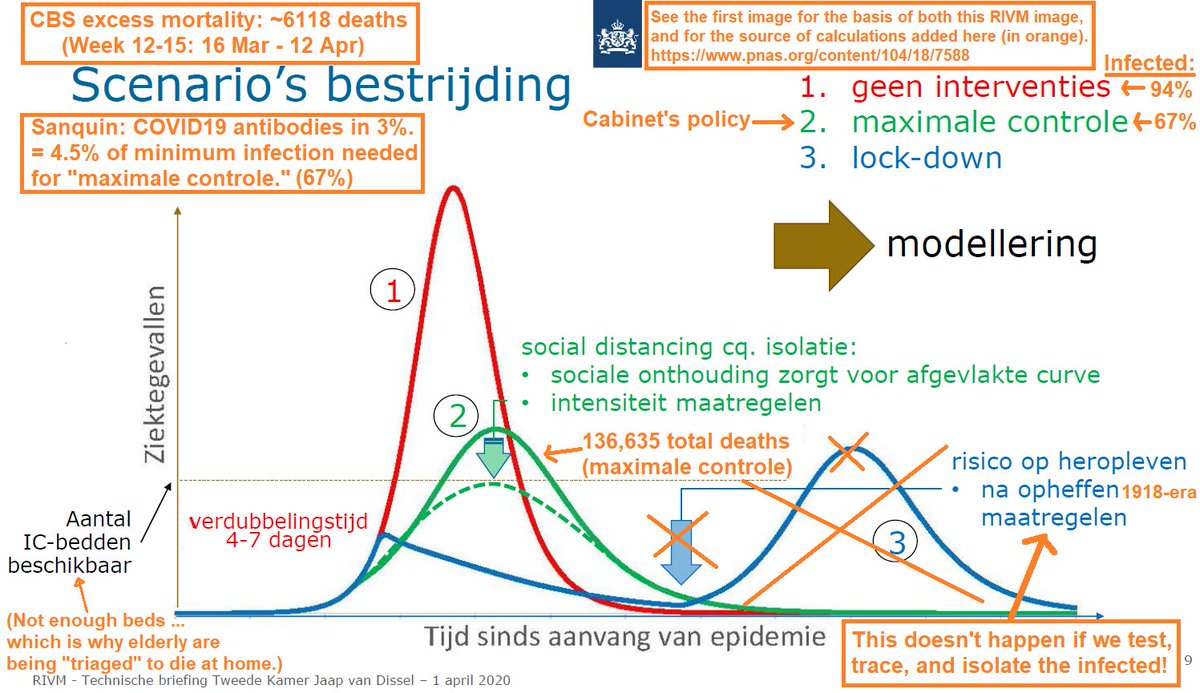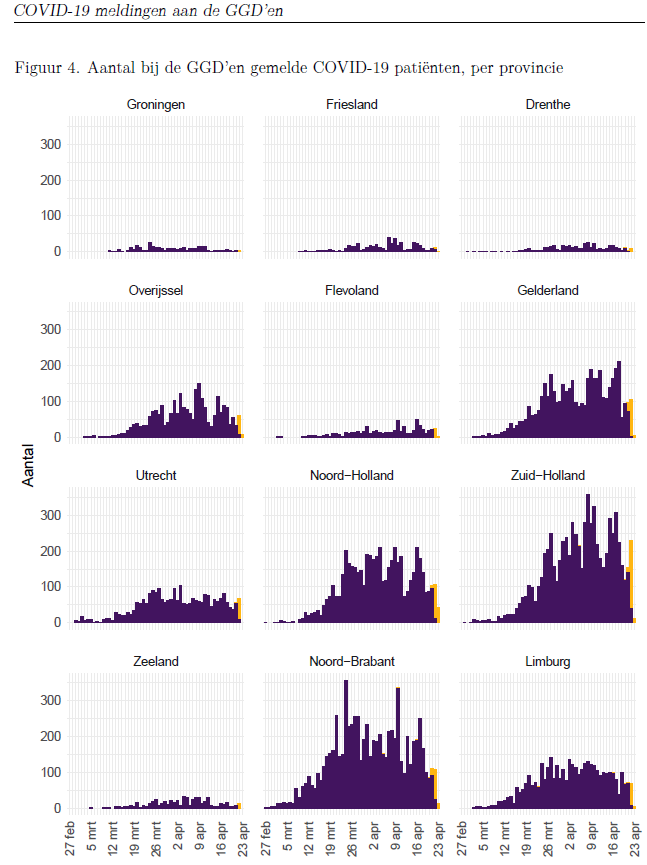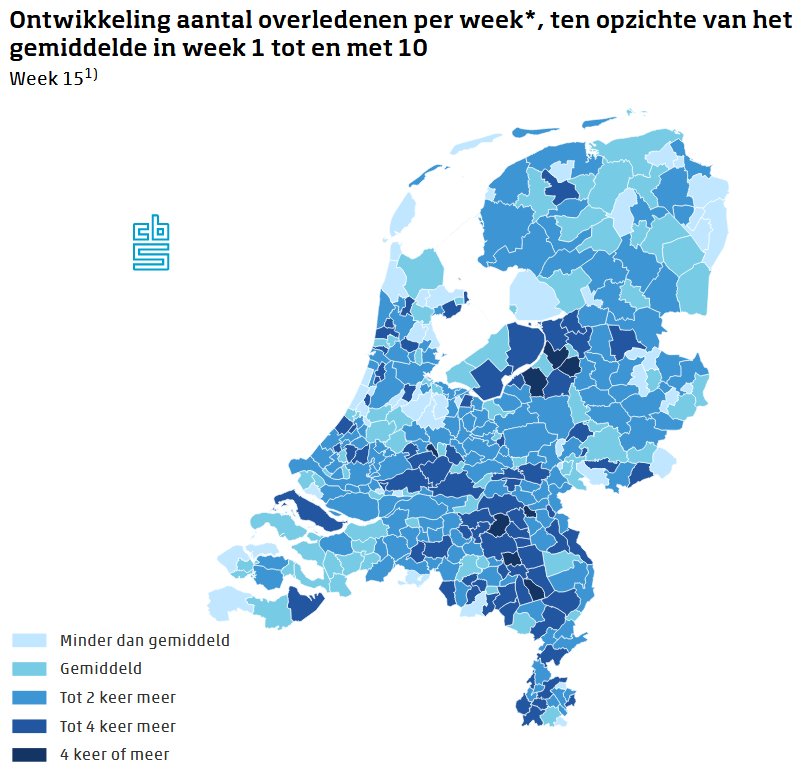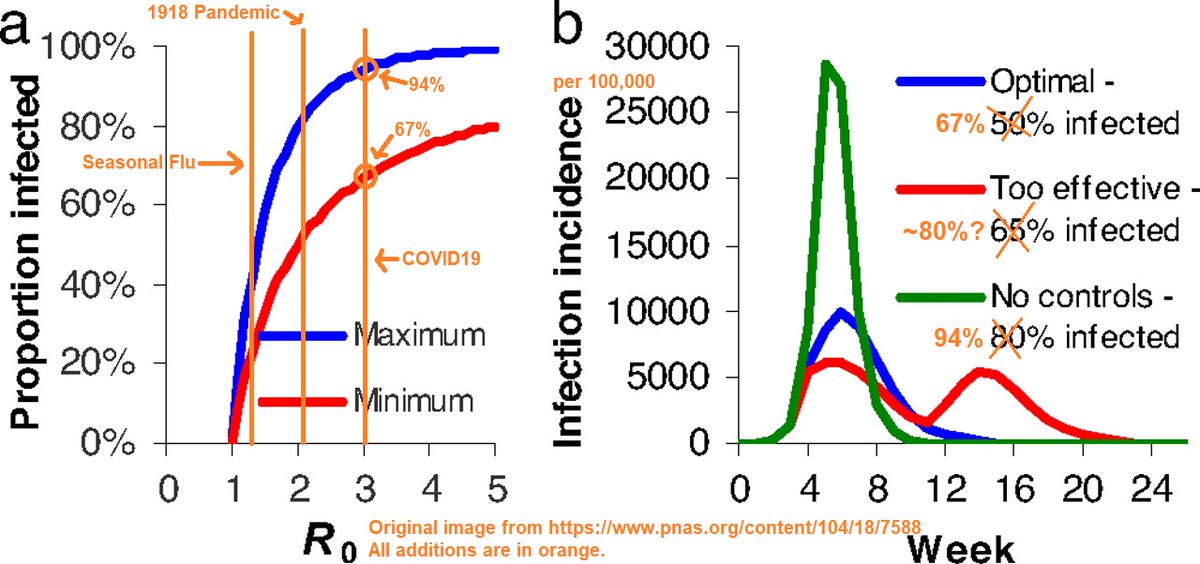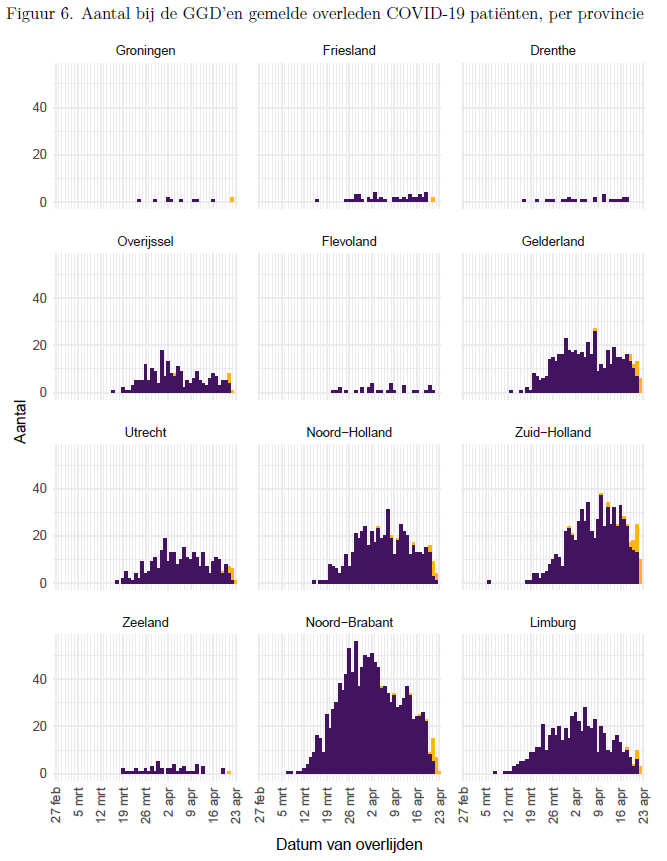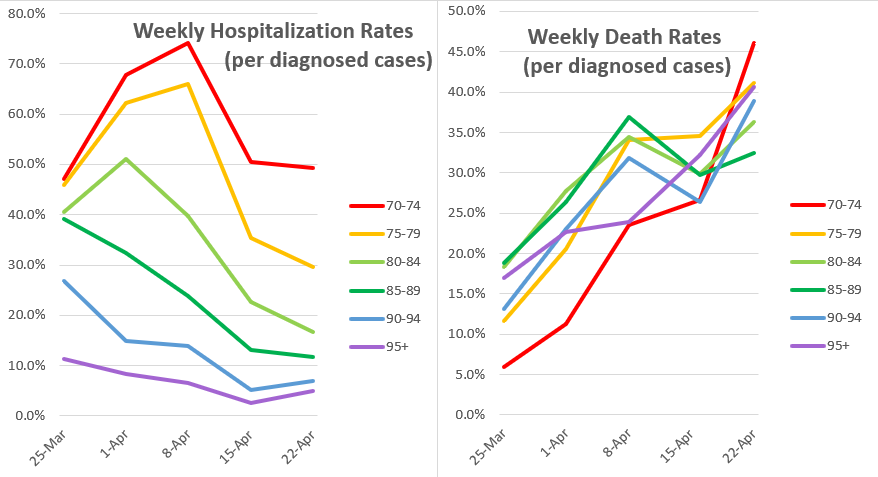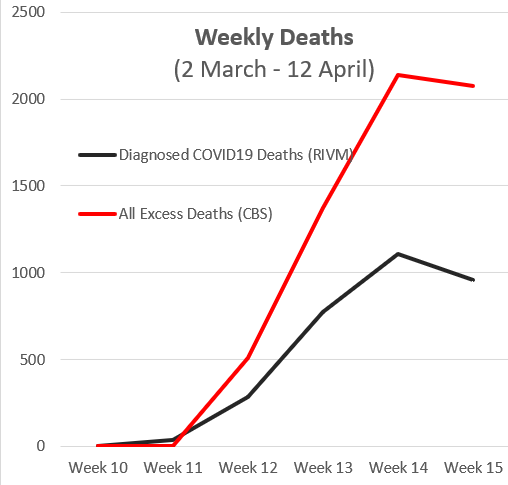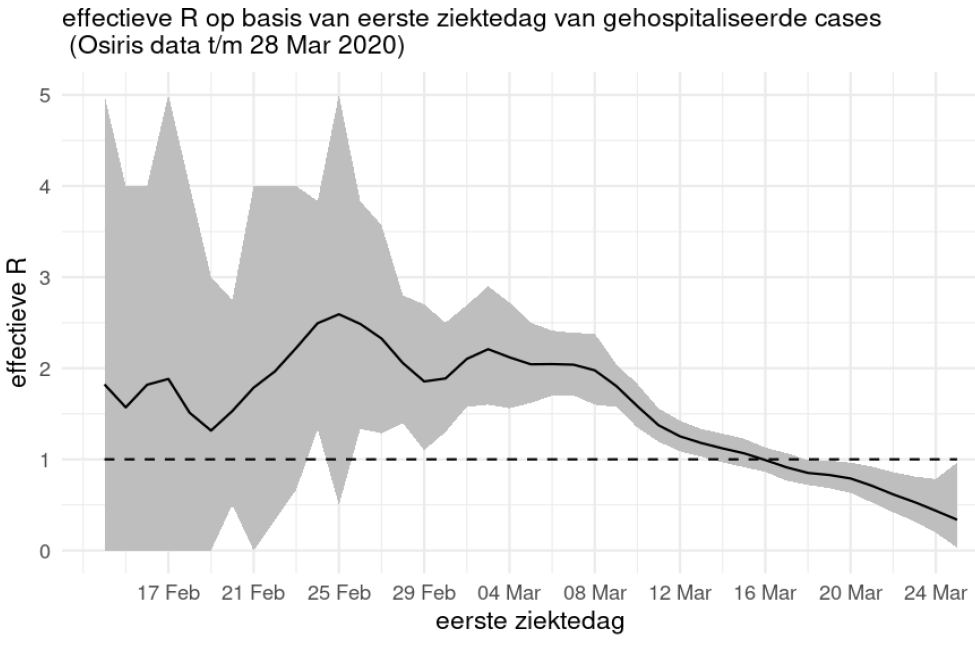The Maximale Controle plan of @MinPres, OMT, and @RIVM will fail for 4 reasons:
1) If it succeeds, 137K die.
2) Natural herd immunity probably won& #39;t happen.
3) Precise timing & scaling required in EVERY community.
4) Accurate & current data is needed, not 4 week old r0 estimates.
1) If it succeeds, 137K die.
2) Natural herd immunity probably won& #39;t happen.
3) Precise timing & scaling required in EVERY community.
4) Accurate & current data is needed, not 4 week old r0 estimates.
1a) Maximale controle is based on US cities in 1918 having surges of flu deaths after removing measures which were too early or intense. Other US cities which intervened a little later or not as harshly had more infected in the first wave, but no surge.
https://www.pnas.org/content/104/18/7588">https://www.pnas.org/content/1...
https://www.pnas.org/content/104/18/7588">https://www.pnas.org/content/1...
1b) When control was optimal, 50% were ultimately infected. When there was no control, 80%. And with too early/intense control, 65%. So now @MinPres and @RIVM think we must aim for that optimal infection rate to attain herd immunity and achieve their goal to minimize deaths.
1c) But COVID19 is more contagious than any flu, and the same model suggests 67% must be infected to attain herd immunity. Sanquin antibody data says 3% have been infected. CBS data shows 6118 excess deaths through the same time. So at this rate 22.33x more will die, or 136,615.
2a) As the amount of predictable deaths rises by a factor of 22.33 in seeking 67% infection, so too does the timeline required to get there at our current rate, which is limited by our IC capacity. It would take 1-2 years, by which time immunity to COVID19 will be gone for many.
2b) A reinfection study involving a different "common cold" corona virus showed that antibody levels (capacity for immune response for that specific virus) is mostly gone after 3-12 months, and most were successfully re-infected at 12 months.
https://www.ncbi.nlm.nih.gov/pubmed/2170159 ">https://www.ncbi.nlm.nih.gov/pubmed/21...
https://www.ncbi.nlm.nih.gov/pubmed/2170159 ">https://www.ncbi.nlm.nih.gov/pubmed/21...
2c) It& #39;s too early to know how long COVID19 immunity will last, but early studies show that many people who are infected develop only low levels of antibodies, and some develop none at all. There are also numerous reports of "re-infection" after recovery. https://www.medrxiv.org/content/10.1101/2020.03.30.20047365v2">https://www.medrxiv.org/content/1...
2d) Vaccines can be far more effective by forcing a better immune reaction than a mild infection, and with better targeting of the virus. But our natural immune response to infection is looking too short-lived & unreliable to achieve herd immunity within a couple years, if ever.
3a) And timing and scaling the measures appropriately requires that the community be at the right stage of their outbreak. As a wise CBS statistician has noted, outbreaks are not uniformly national: they reach different communities at different times, and grow at different rates.
3b) We saw this in the earlier outbreak in Noord Brabant, with Zuid Holland and Limburg close behind. We see it still with little infection in the northern provinces. But even more precisely, we see outbreak variation in every gemeente. Even nursing homes have their own dynamic!
3c) Optimal control is premised on implementing the right measures for each community at the right time. E.g. an appropriate intervention for Noord Holland may be too late or too mild for Zuid Holland. So instead of the perfect 67% infection, Zuid Holland may end up with 90%.
3d) But if measures are only strict in Zuid Holland, those with the resources will simply flee to Texel, taking more of the outbreak with them. Outbreaks dynamics in both areas will be altered, making control difficult, and selectively burdening isolated & unequipped locations.
3e) And controlling from the national level means using merged data which will be inaccurate for many areas, and could be wrong for all. If it& #39;s too early for half the country, the averaged data won& #39;t show it& #39;s the right time until it& #39;s too late for the other half of the country.
4a) Which brings us to our data problem. To know the right time to implement measures with the Maximale Controle model, we need to constantly know how the outbreak is proceeding. This means having accurate and very recent data, so that measures can be altered at the right time.
4b) r0 is best calculated with frequent widespread testing to catch new cases early. We lack the capacity for that, so hospitalization is used instead. But that is also incomplete, due to triaging the presumed infected elderly to stay in group care homes.
https://www.verenso.nl/themas-en-projecten/infectieziekten/covid-19-coronavirus/behandeladvies-acute-fase-en-nazorg">https://www.verenso.nl/themas-en...
https://www.verenso.nl/themas-en-projecten/infectieziekten/covid-19-coronavirus/behandeladvies-acute-fase-en-nazorg">https://www.verenso.nl/themas-en...
4c) Hospitalization trends only work if representative of everyone, but they are not: hospitalization rates of elderly drop while their diagnosed death rates soar, and undiagnosed deaths rise in CBS stats while diagnosed deaths stay steady. So these subsets have different trends.
4d) Modelling to estimate r0 is also dangerous, because models are based on assumptions which may be incorrect. E.g., people are infected several weeks before hospitalization, so if we use today& #39;s data to estimate yesterday& #39;s r0, the results will be extremely misleading.
In summary: Maximale Controle only functions as a localized plan, and only if informed by accurate and timely data. The reliance on herd immunity to prevent surges requires prolonged immunity. And even if it succeeds, 137K die still.
Alternative: crush the curve, test & trace!
Alternative: crush the curve, test & trace!

 Read on Twitter
Read on Twitter